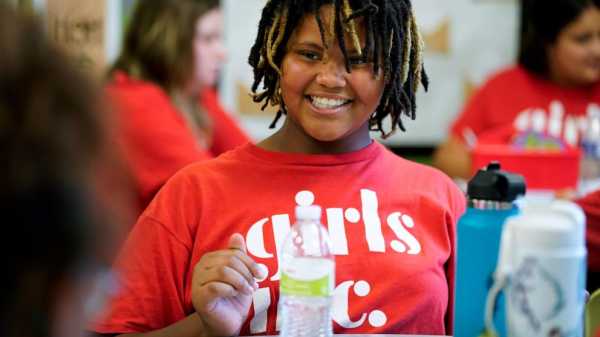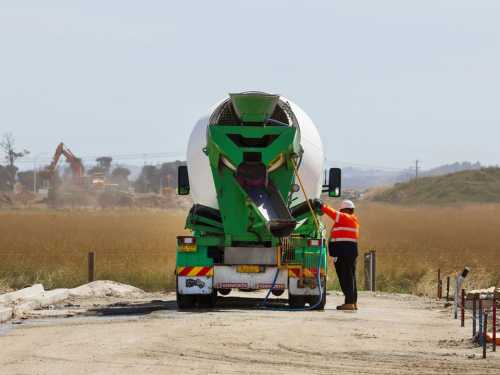
Ten years after publishing her book “Lean In: Women, Work and the Will to Lead,” Sheryl Sandberg will launch a girls leadership program Thursday through her foundation to respond to what she calls stubborn gender inequities.
“What we realized is that in order to really get to equality, equality in leadership everywhere, from our parliaments to our statehouses to our homes, we’re going to have to go younger,” Sandberg said in an interview with The Associated Press.
The girls leadership program, which includes a middle-school curriculum as well as resources for adults, starts with difficult conversations about the systems and biases that Sandberg said girls face.
“Who wants to say to a girl seven years before she enters the workforce, ‘One day you’re going to be in a meeting and some man is going to talk over you, voice something you just said and get credit for your ideas,'” Sandberg asked. “We don’t want to tell our daughters that."
But speaking about those biases, she said, then allows for a conversation about how to counteract them.
“We’re going to start telling you the challenges, but then we’re also going to equip you and the people around you to change them,” Sandberg said.
Many nonprofits and schools run programs that encourage girls to lead, particularly teenagers, who research shows may retreat from high-profile roles or limit their ambitions in response to social pressures. However, researchers caution against making broad generalizations about the experiences of all girls and say that any national curriculum needs to be flexible to be relevant.
Lean In piloted the new curriculum with girls 11 to 15 years old, along with partners like the Girls Scouts of Northeast Texas, KIPP Public Charter Schools and the nonprofit Girls Inc. It also plans to provide resources to help adults challenge gender norms in their families, schools and communities. Lean In is a project of the Sandberg Goldberg Bernthal Family Foundation, the private foundation Sandberg started with her late husband, Dave Goldberg. Her second husband, Tom Bernthal, is a member of the board.
Sandberg has acknowledged criticism of her call for women to step up in their roles at work and to ask for additional help from partners at home. The goal of Lean In, she said, including its program for girls, is to secure a fair share of leadership roles for women in business, politics and families and to change ideas about what effective leadership is. Expanding the pool of potential leaders benefits everyone by drawing on the talents of the whole population, she said.
The first half of the 15 hour-long sessions will be freely available online for any caring adult to use, while the second half requires facilitators from partner organizations to participate in training sessions provided by Lean In. To extend its reach, Lean In will also tap the women already engaged with their networking and support circles, asking them to run sessions for teenagers in their communities.
Finding an audience for girls leadership programs and fundraising to support the program were challenges faced by Jean Sinzdak, associate director of the Center for American Women and Politics at Rutgers University. She helped run a leadership program for girls focused on encouraging political participation and civic knowledge that started in 2014. As an organization that also did not serve youth directly, she built partnerships with Girl Scout troops and ran pilot projects in schools to distribute their curriculum that is also free to use online.
“Our framework was: have resources available and then work to get it scaled up through organizations already doing this work,” she said.
Research and conversations about girls limiting themselves or quieting their voices as they reach teenage years extend back decades, said Katherine Clonan-Roy, assistant professor at Cleveland State University. That includes the work of psychologist and feminist Carol Gilligan in the 1980s, and Janie Ward, a professor at Simmons University, who studied the youth development of Black teenagers.
Clonan-Roy said she sees teenagers and college students today demanding more humane treatment from their schools, but also thinks that institutions and social biases are slow to change.
"The ways that we socialize girls to feel that if they speak up or use their voice, they’ll be labeled unlikable or bitchy, I think all of those things are still, unfortunately, very real and very with us,” she said.
A challenge for any curriculum right now is to communicate with parents and communities about the program's intents and benefits, Clonan-Roy said, especially in this polarized political and social environment where some parents request to ban books and contest what history and literature is taught.
Lean In thought very carefully about the many contexts and settings in which its program might reach girls, Rachel Thomas, its CEO, said. But the curriculum includes the assumption that recognizing the potential and achievements of girls is valuable and that creating a more equal world is important.
“If you don’t believe in equality and you don’t believe in lifting our girls up, you know, this program won’t resonate with you,” Thomas said.
They've required facilitators to participate in trainings to deliver the second half of the curriculum to ensure they are equipped to speak about social issues and be inclusive and welcoming to all girls. The program is meant to include anyone who identifies with the girlhood experience, Lean In said, meaning it's inclusive of trans girls and nonbinary children.
Clara Montero, 15, was part of a group of teenagers who consulted with Lean in on the curriculum to help make it relevant to teenagers. A rising junior who lives in Toronto, Montero said she benefited from the reviewing process. At a Model UN conference, she took steps to pursue her goals and vision and earned a top award from her peers.
"I think this curriculum will open so many doors for anyone who does it," Montero said. “I think that it will help you see opportunities that you didn’t know existed before.”
___
Associated Press coverage of philanthropy and nonprofits receives support through the AP’s collaboration with The Conversation US, with funding from Lilly Endowment Inc. The AP is solely responsible for this content. For all of AP’s philanthropy coverage, visit https://apnews.com/hub/philanthropy.
Sourse: abcnews.go.com






